The guidebooks tell us that the Alhambra in Granada is one of those sights that just has to be seen at least once. But is it worth the aggravation, worth putting up with the crowds? Is it worth the hype? During our week in Andalusia we had the chance to find out.
A mix of palaces, fortifications, gardens and patios, it’s a monument to the Moorish monarchs of the Nasrid dynasty who ruled this part of modern-day Spain until the late 15th century and the completion of the Christian reconquest of Iberia. As one of the country’s most popular tourist sites and a UNESCO World Heritage Site, the Alhambra is not an easy place to visit either. We’d had to book tickets several months in advance and even then we could only get into the star attraction, the Nasrid Palaces, at 6.30pm…
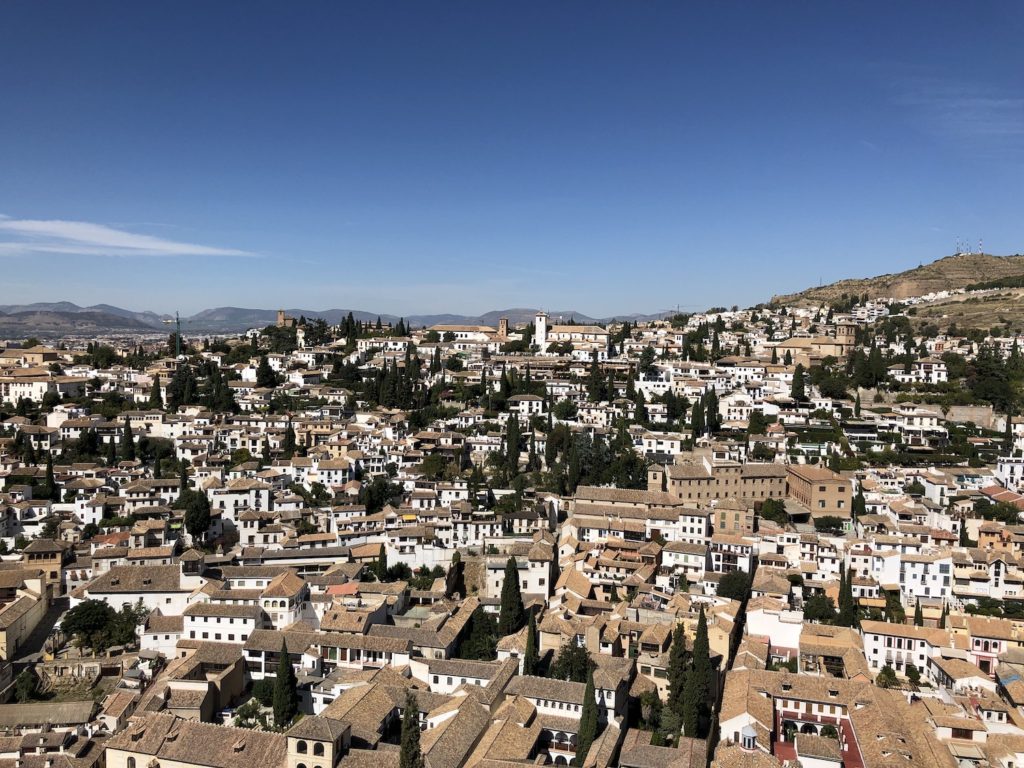
Granada is an attractive city, at least at its heart, and the Alhambra looms over it like a benevolent father. On our first night in town we climbed the narrow streets of the Albaicín on the hill opposite, an atmospheric district of Arabic origin where many gather to watch the sun setting over the city. It’s one of the best places to see the Alhambra at night, bathed in the golden glow of dusk. The sunset that night from the viewpoint at Mirador San Nicolás was extraordinary; it filled the sky with fire and colour and I knew we were in for a treat of a visit.
The city may not have been quite as hot as Cordoba but, the next day, it was still a sweaty, tiring climb up from the Plaza de Santa Ana to the Alhambra. Low-rent cafes and crappy souvenir shops lined the street and gypsy women hung around trying to con tourists with their rosemary scams. Inside the protective walls of the Alhambra, though, we were left alone amid the woods, in peace, free of the detritus of 21st century tourism. We’d given ourselves the whole afternoon to explore what is a very big site indeed and to have a pleasant lunch. However, as it turned out there’s little in the way of decent cafes, Which wasn’t necessarily a bad thing because I was suffering an inevitable dose of the trots.

Not everywhere requires a ticket so doubtless some folk were up there for the views alone, which are pretty special. In the far distance, beyond the plains and suburbs, lie the mountains. Opposite lies the picturesque jumble of Albaicín and the neighbouring gypsy district of Sacromonte, where locals in centuries past carved homes into the hillside. Photos taken, we explored the Alcazabar, the most westerly part of the Alhambra and its principal fortress. Built on Roman foundations, it’s the most brutal and perhaps the least interesting of the structures, a jumble of towers and defensive walls. One of the most striking of buildings lies nearby, the Palace of Charles V. Built after the Christian conquest but never completed or lived in, it has an imposing Renaissance facade to the south and a stunning circular patio, colonnaded and on two floors. Between the palace and the neighbouring Church of Santa Maria de la Alhambra is the entrance to the magical gardens of El Partal. There’s little left of a building that was once part of the Nasrid Palace but it’s the reflecting pond and the beautiful Islamic-style planting that really catch the eye. We visited them a couple of times, captivated by the reflections and colours, joining the crowds taking photos by the score.
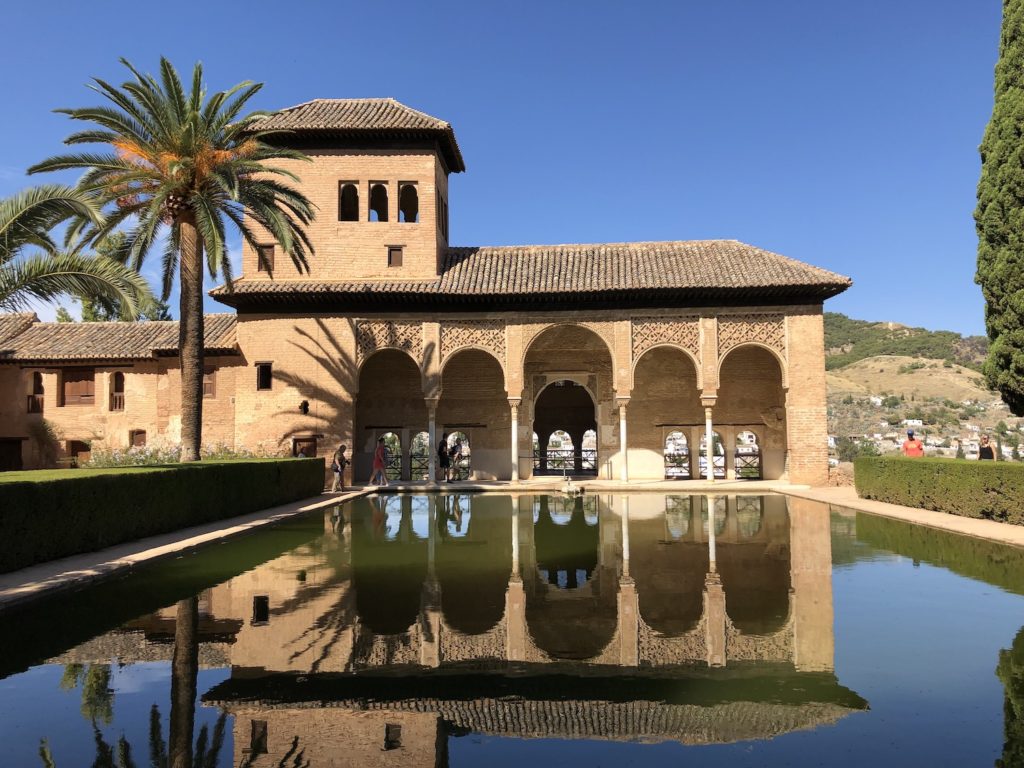
We walked along the defensive walls, past towers, through more gardens, making the most of the all-important shade, towards the part of the site known as the Generalife. This stands apart from the main Alhambra complex and represents what would’ve been the summer retreat of the Nasrid rulers. The gardens, dating from the early 20th century, are splendid, full of cypress, ponds, fountains and perennials. Trees offer shade and it’s all wonderfully relaxing when you can escape the tour groups. There’s not much left of the palace itself and what remains betrays little of the beautiful Arab craftsmanship that would’ve been on show at the time of the Nasrids.
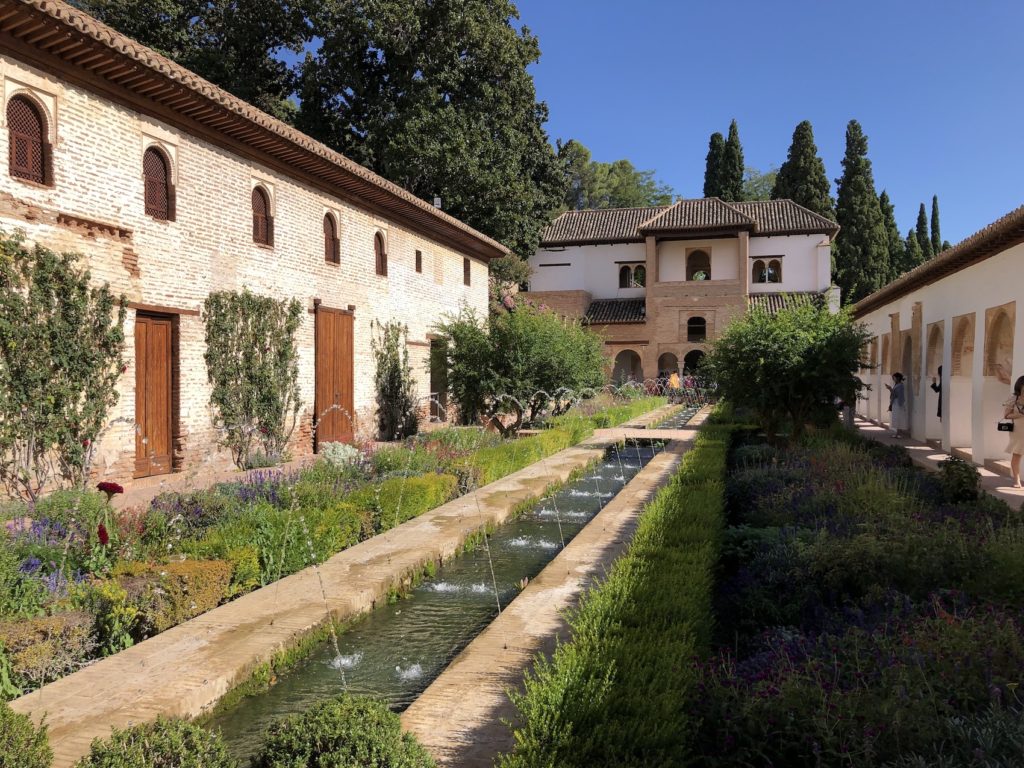
That craftsmanship is most definitely on show in the Nasrid Palaces, which feature exquisite plaster and wood carvings, calming water features, beautiful colours and charming patios. We queued up with the rest of the 6.30pm visitors and did the tour, which threw up one marvel after another. The Court of the Myrtles has a large pond, the majestic Hall of the Ambassadors a compelling ceiling and wooden dome designed to impress those who came to pay homage to the monarchs. The Court of the Lions is, perhaps, the most impressive of the spaces, built around a fountain supported by 12 while marble lions. This in turn is surrounded by a low gallery supported by 120+ marble columns that look so delicate it’s impossible to believe they can keep the structure upright. The best of the ceilings is in the Hall of the Abencerrajes, a riot of golds and blues and reds, spectacular carvings and light.
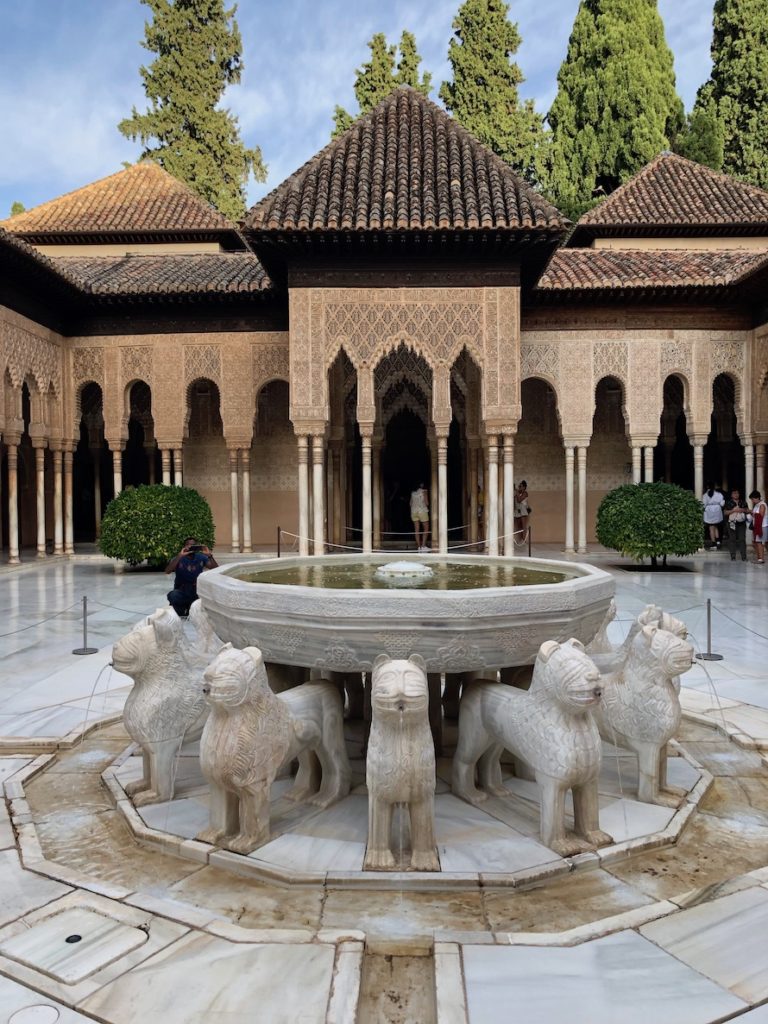
The people who built and furnished the palaces were extraordinarily talented and the accompanying audio guide went into great detail about their work and the various architectural features. Sadly, there was significantly less information about the Nasrid rulers and I was left wanting to learn more about the men who continued ruling this part of Spain until the 1490s. I certainly had no idea they held on for that long! It was internal conflict within the ruling family and the growing power of Spain that ultimately led to the downfall of the Emirate, but they did at least leave behind a fabulous monument.
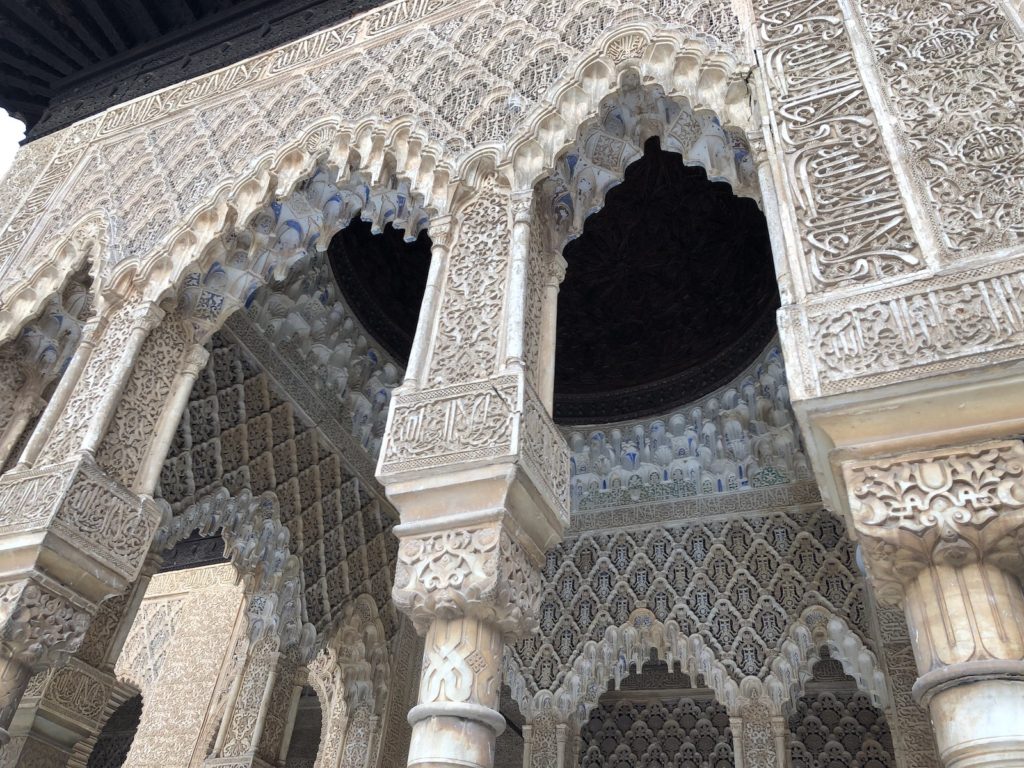
Overall the Nasrid Palace proved to be cool and calming, elegant and atmospheric but throughout our visit I kept comparing it in my mind to the Alcazar in Seville, which features the same extraordinary craftsmanship and colours. And in my mind it’s the Alcazar that comes out on top, because it’s just a bit more epic. Granada wins because of the sheer scale of the Alhambra and the variety of things to see there, the drama of its setting and the glory of its gardens.
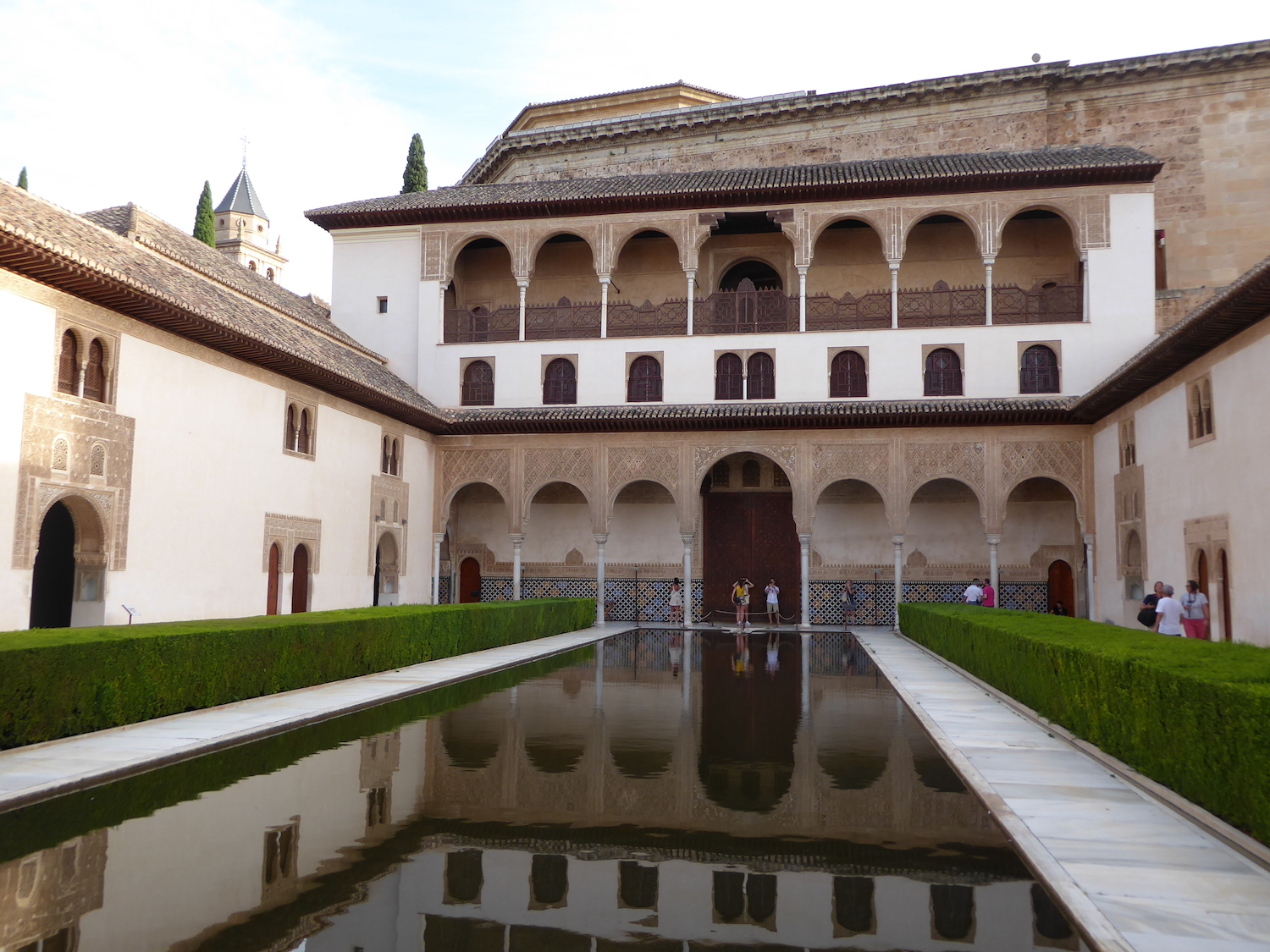
By the time we left the Nasrid Palace, the Alhambra was closing, the crowds had gone and we were able to walk through the grounds in peace, free of the selfie-stick crowds, cruise ship tour groups and the dawdlers. The sun was beginning to set and the stones of this remarkable monument glowed a warming gold. It was magical and we could tick off another entry on the bucket list…

